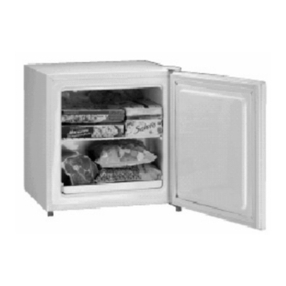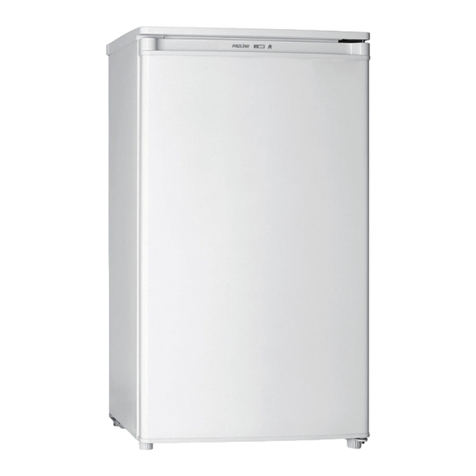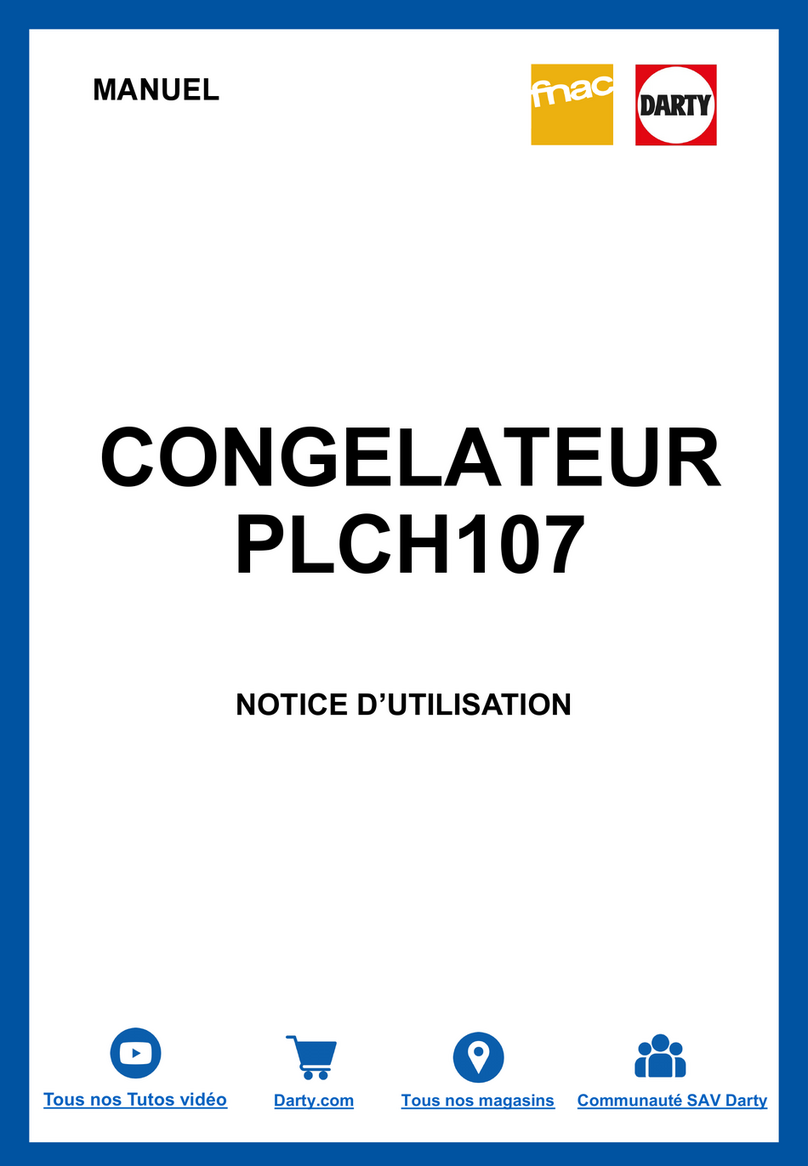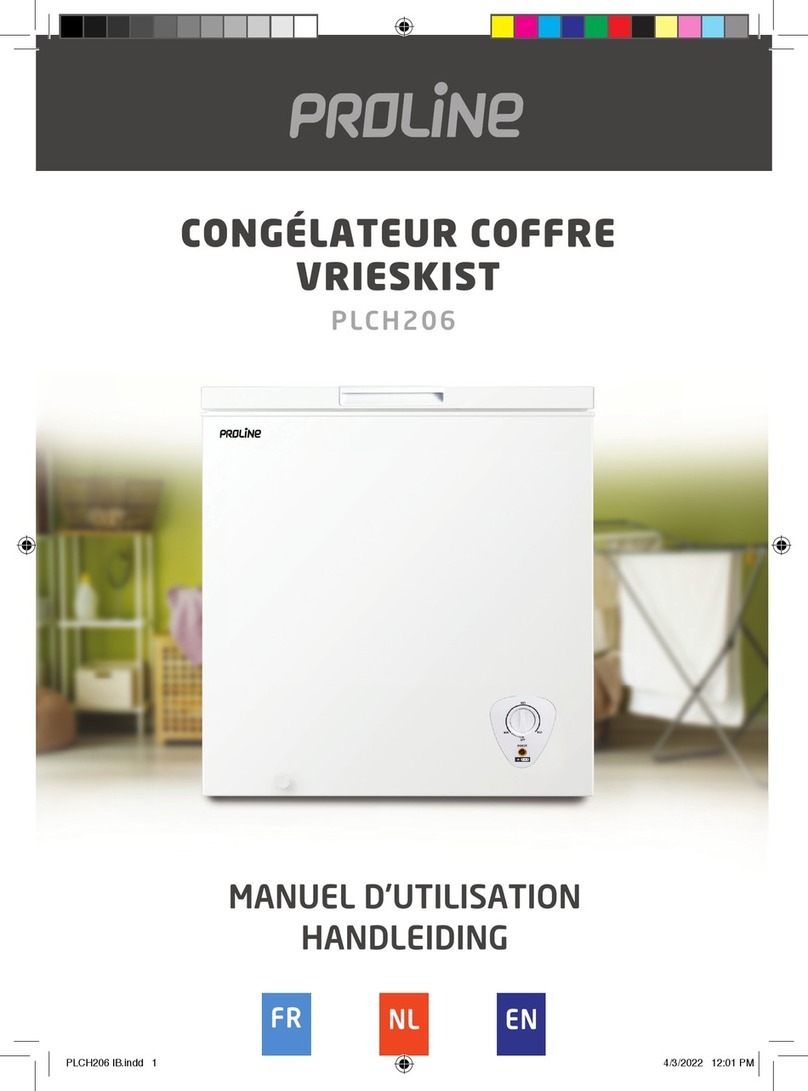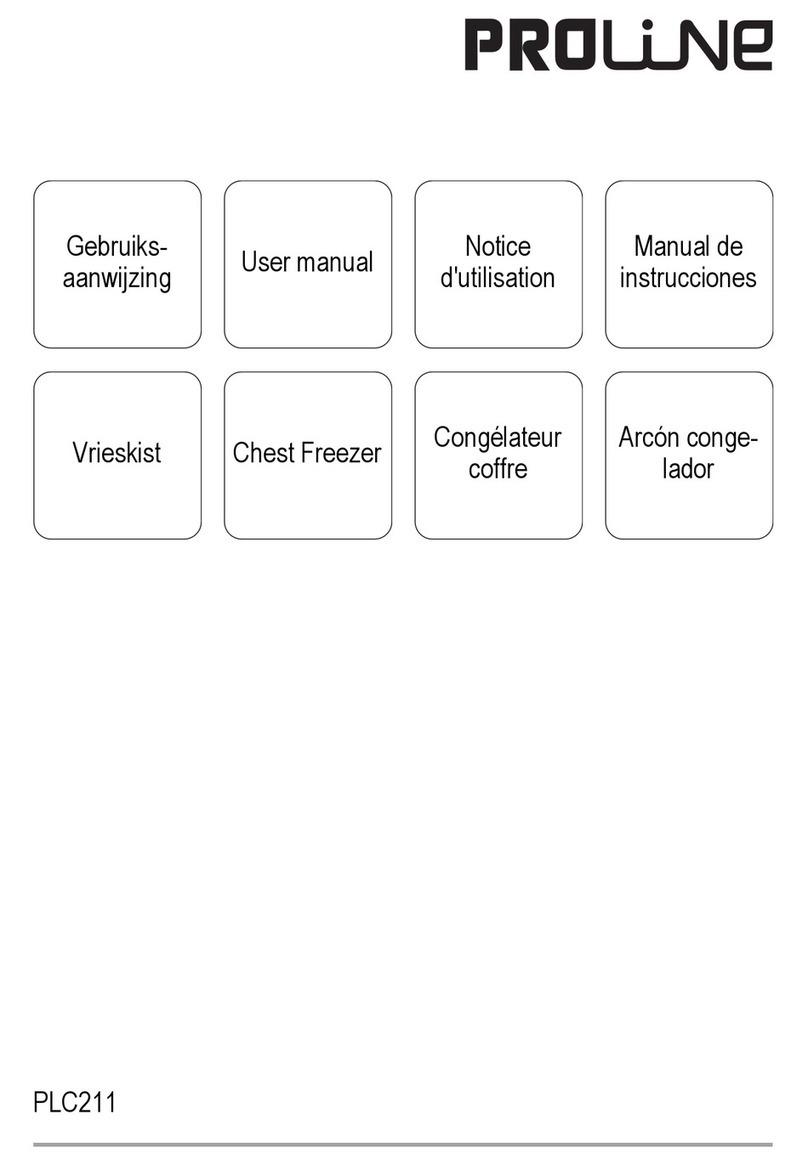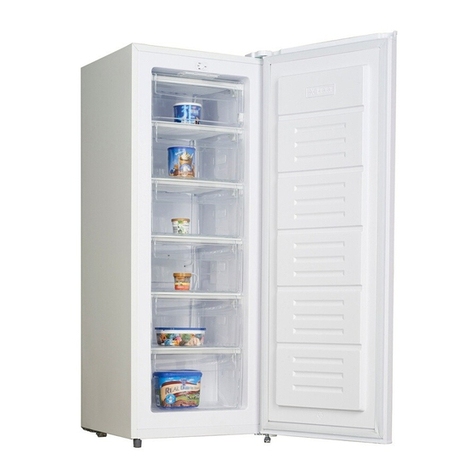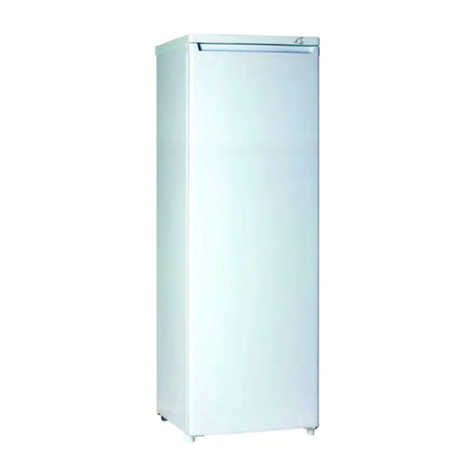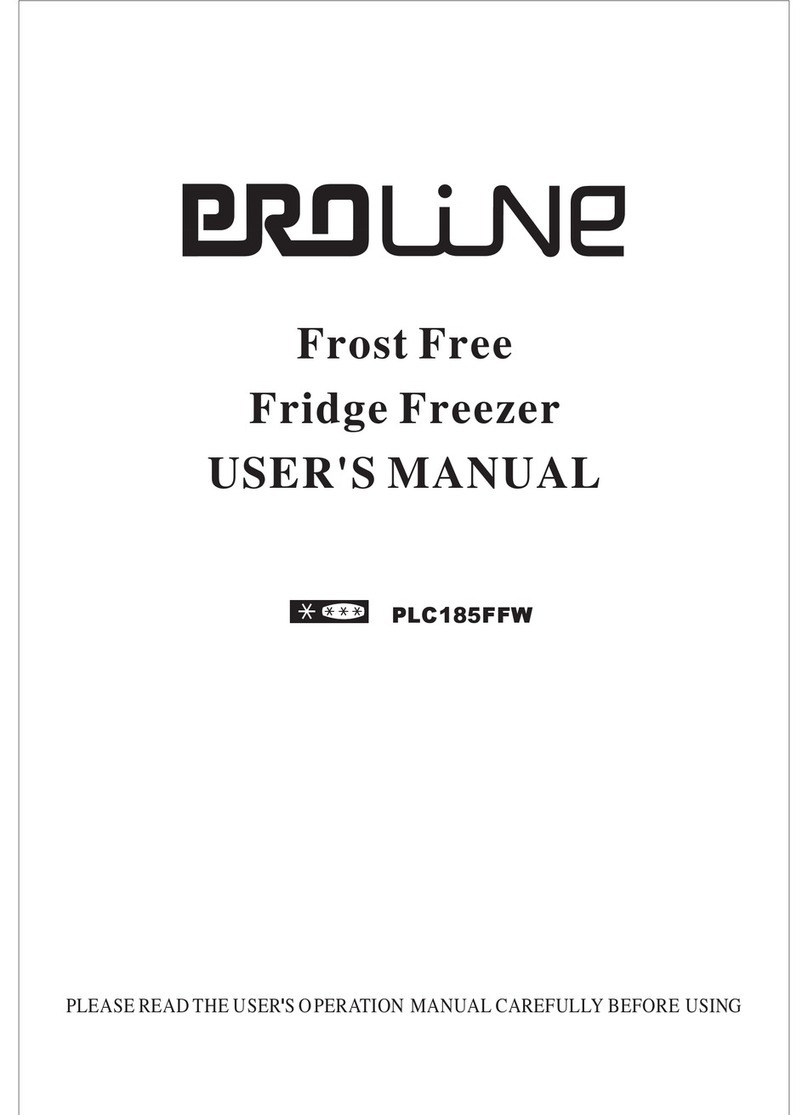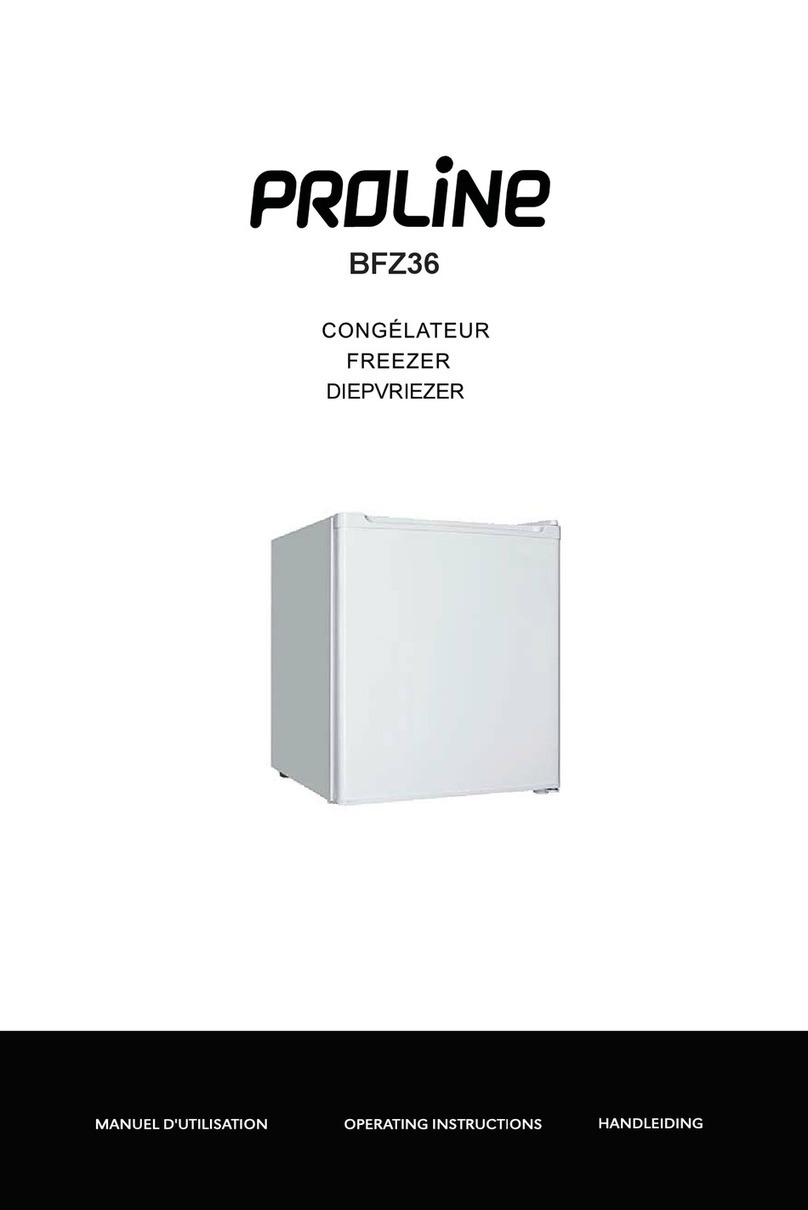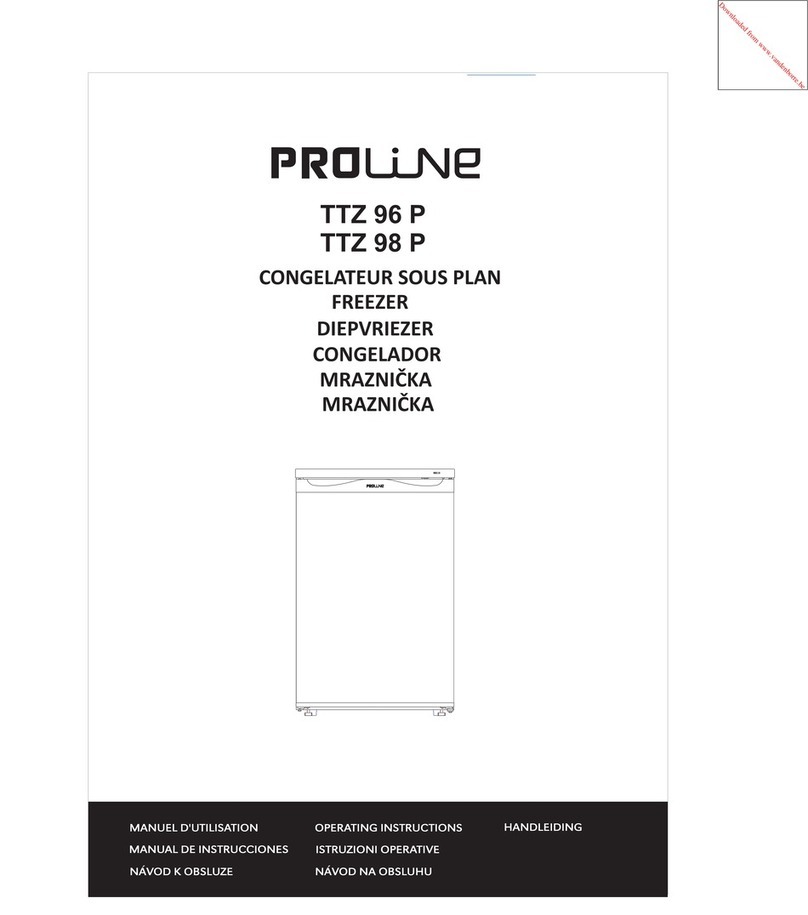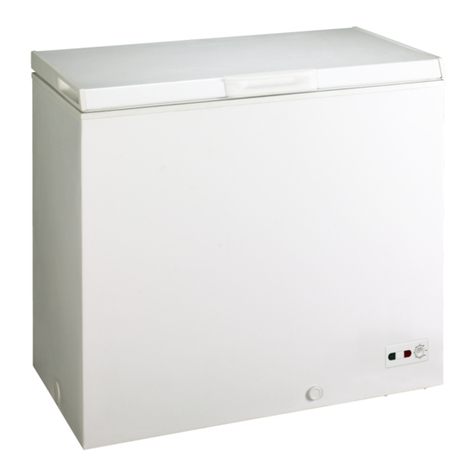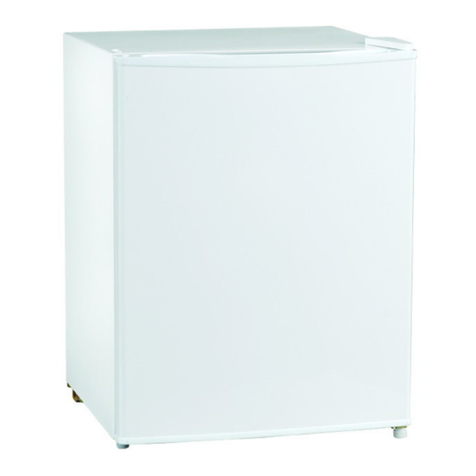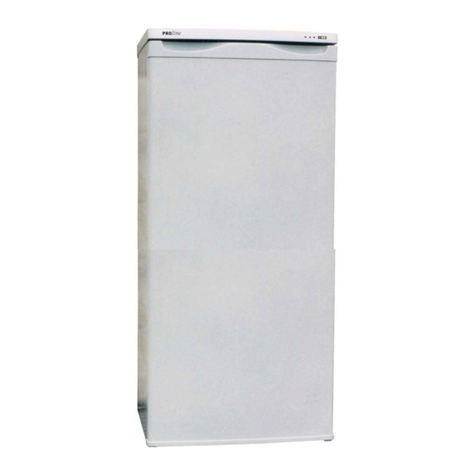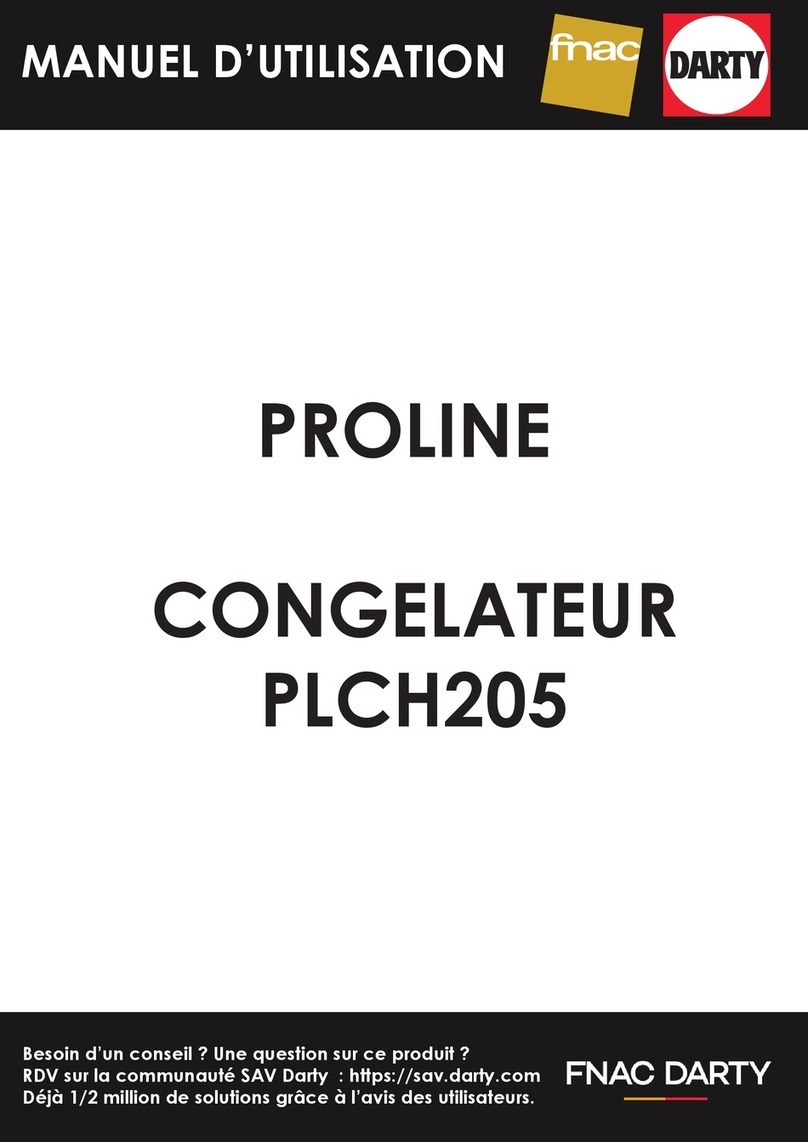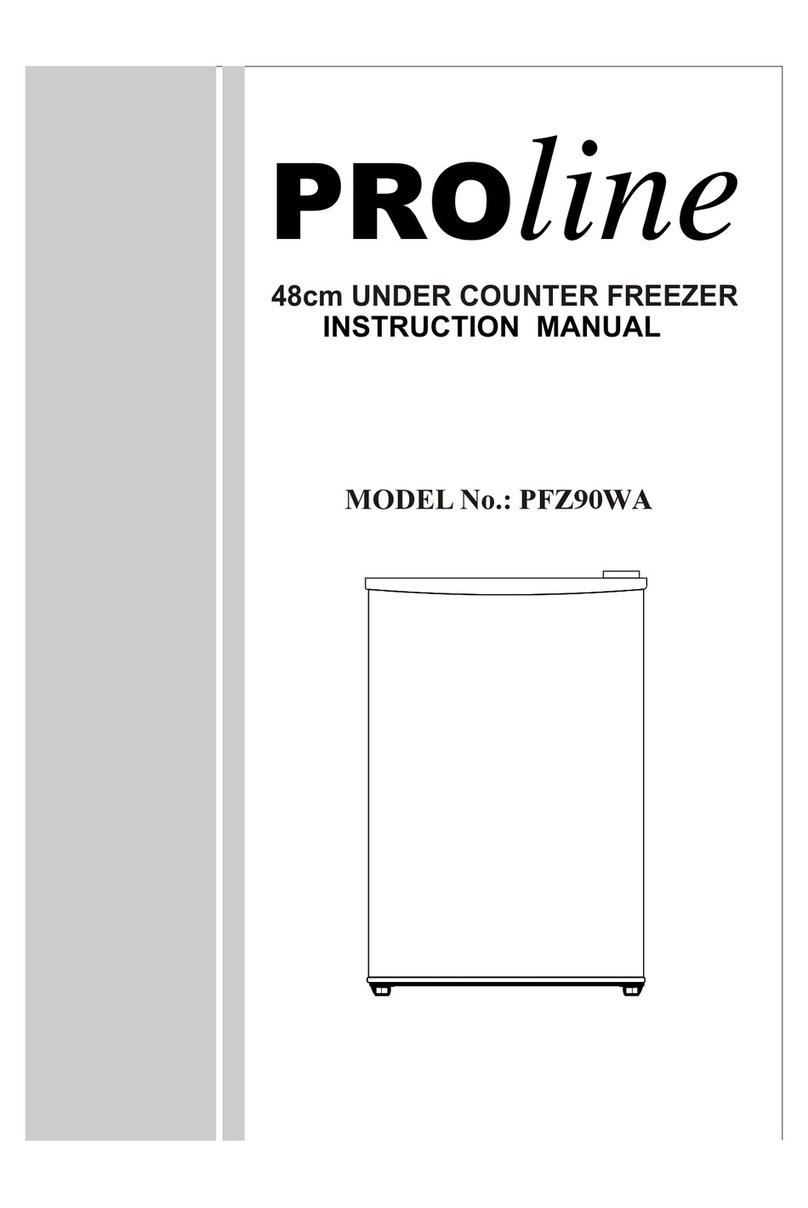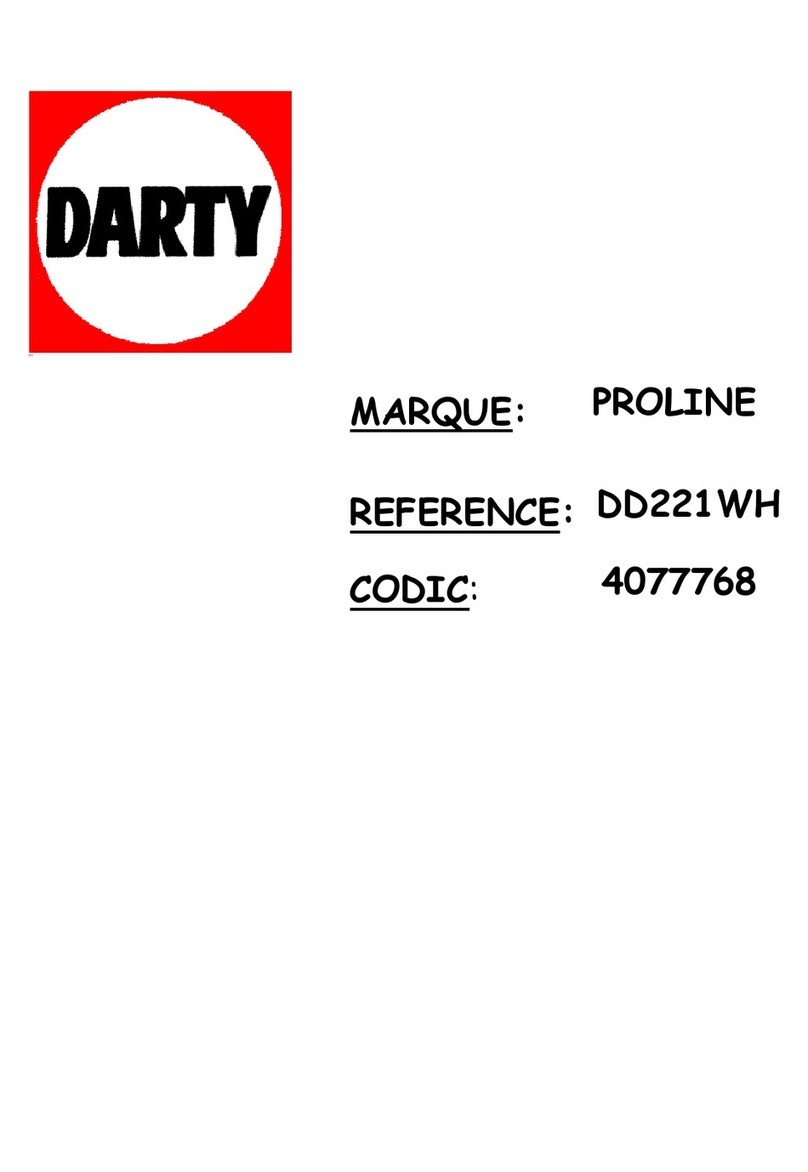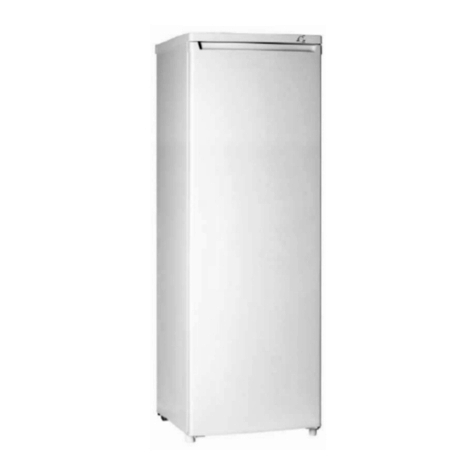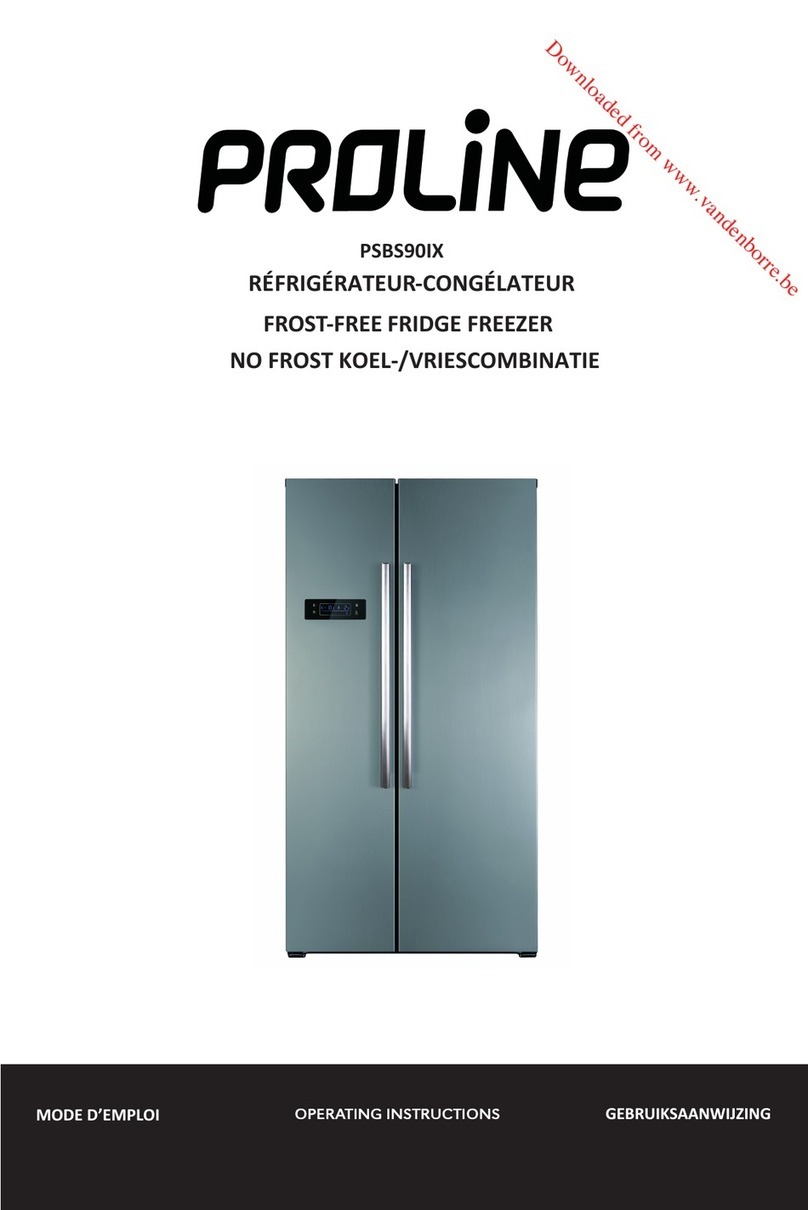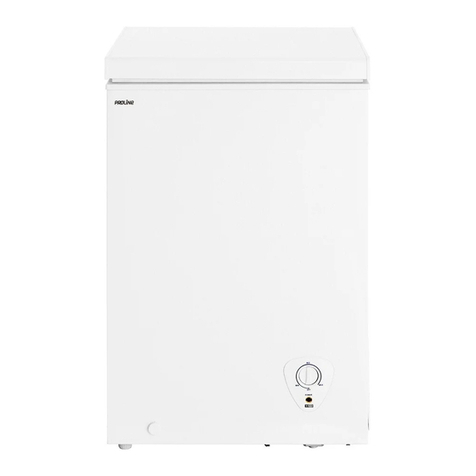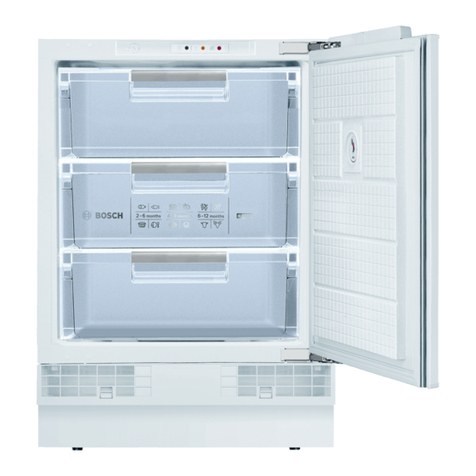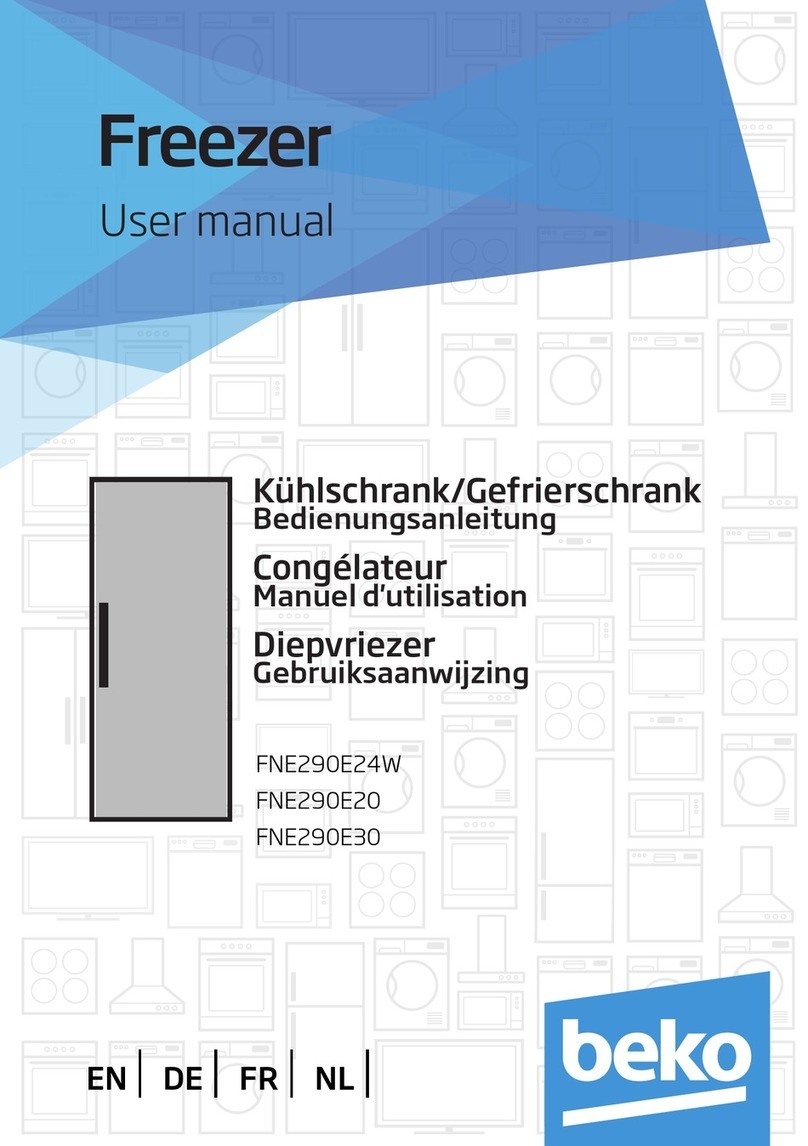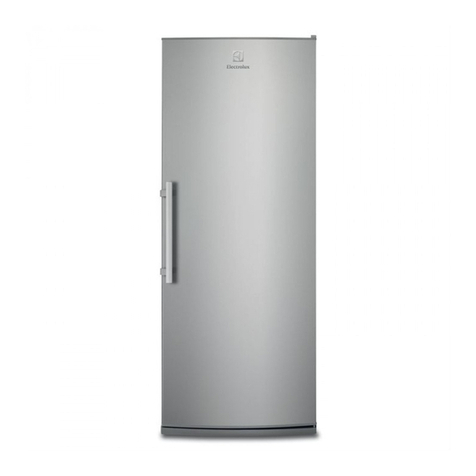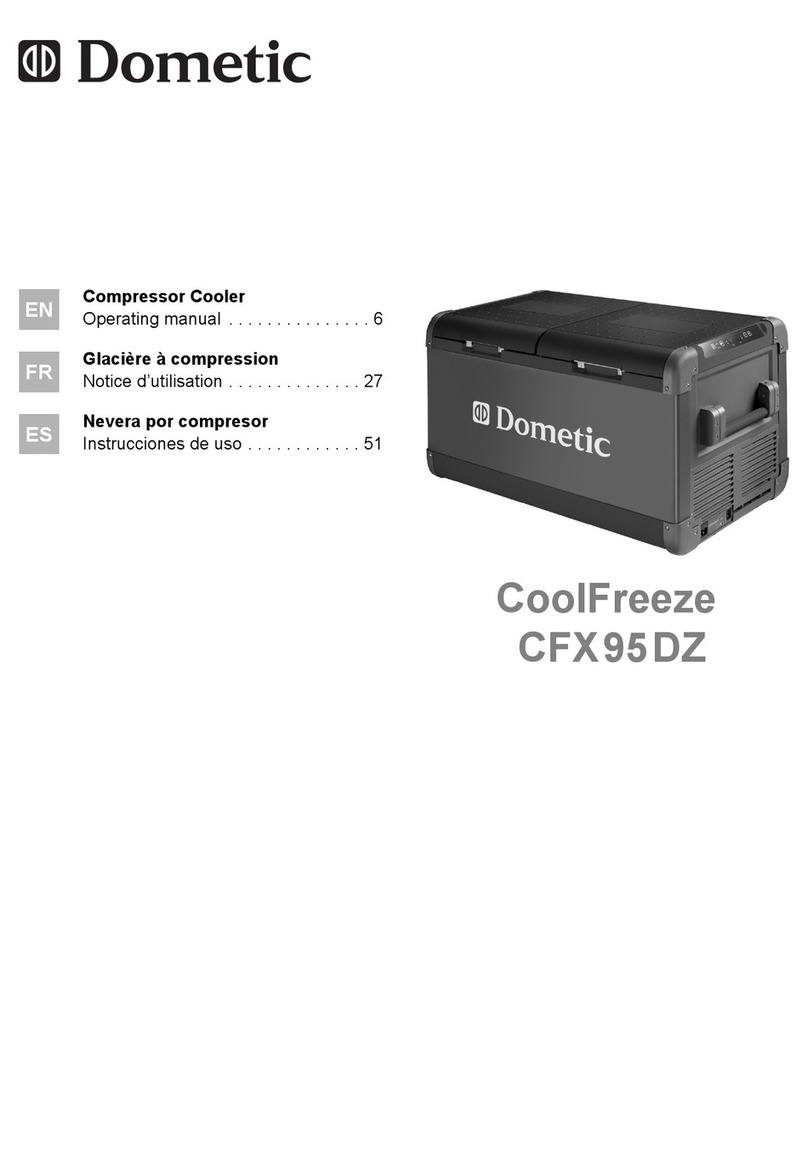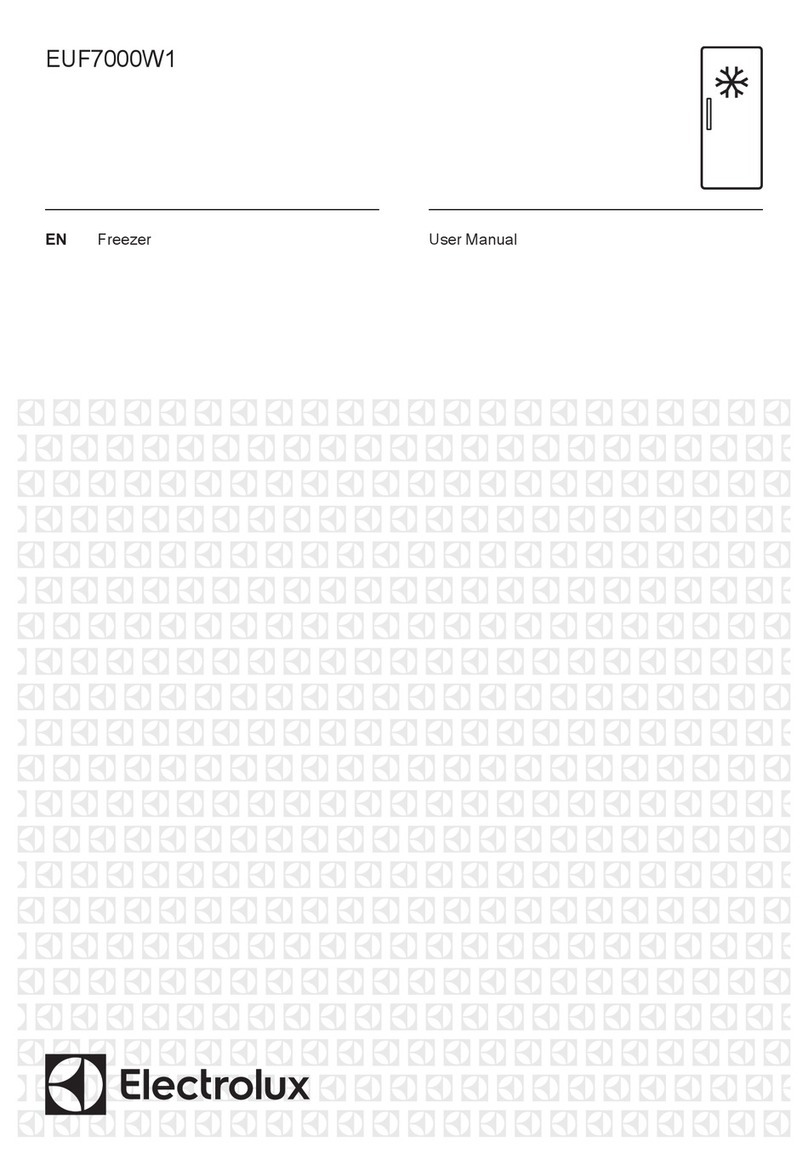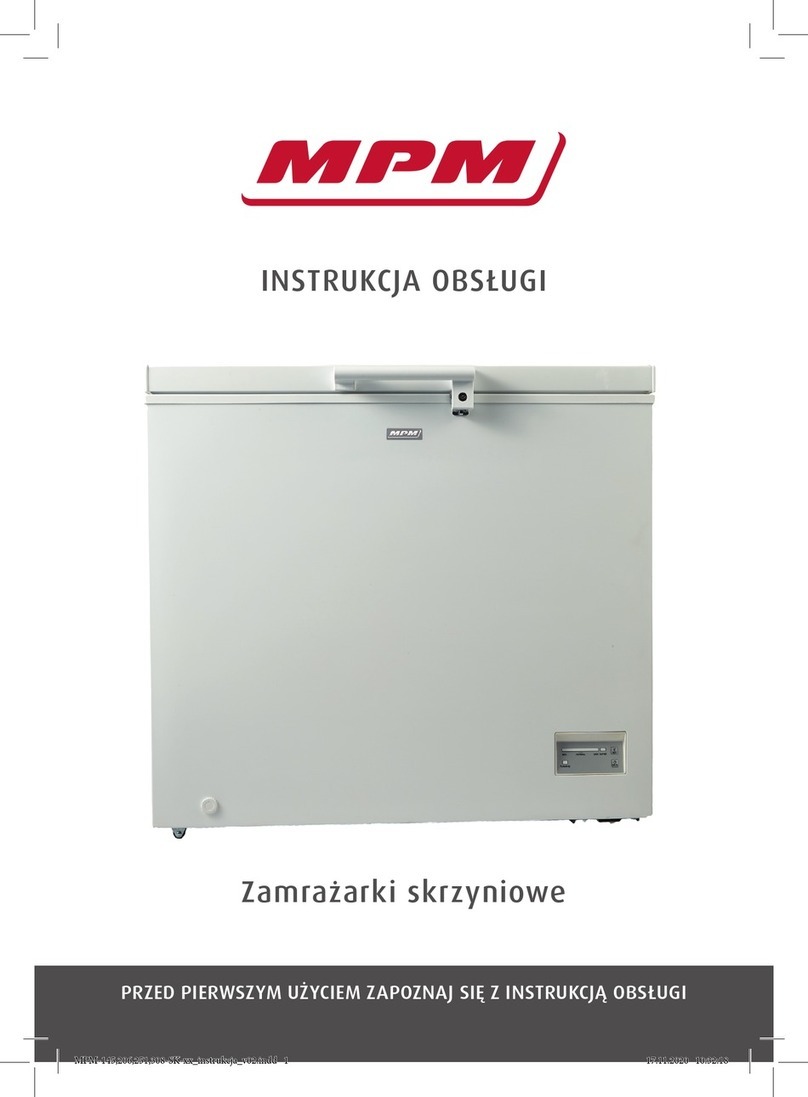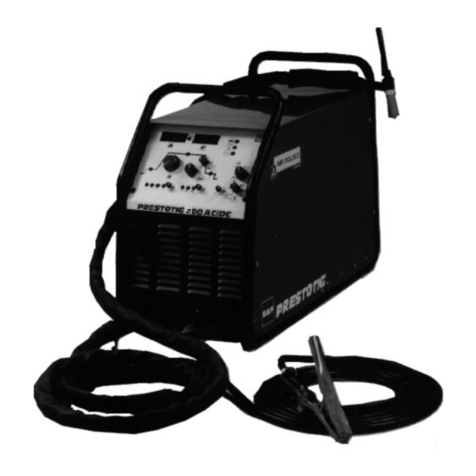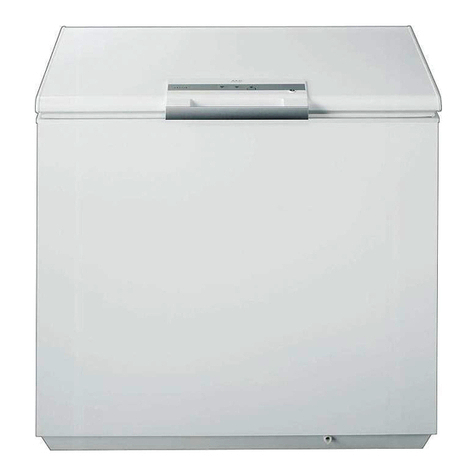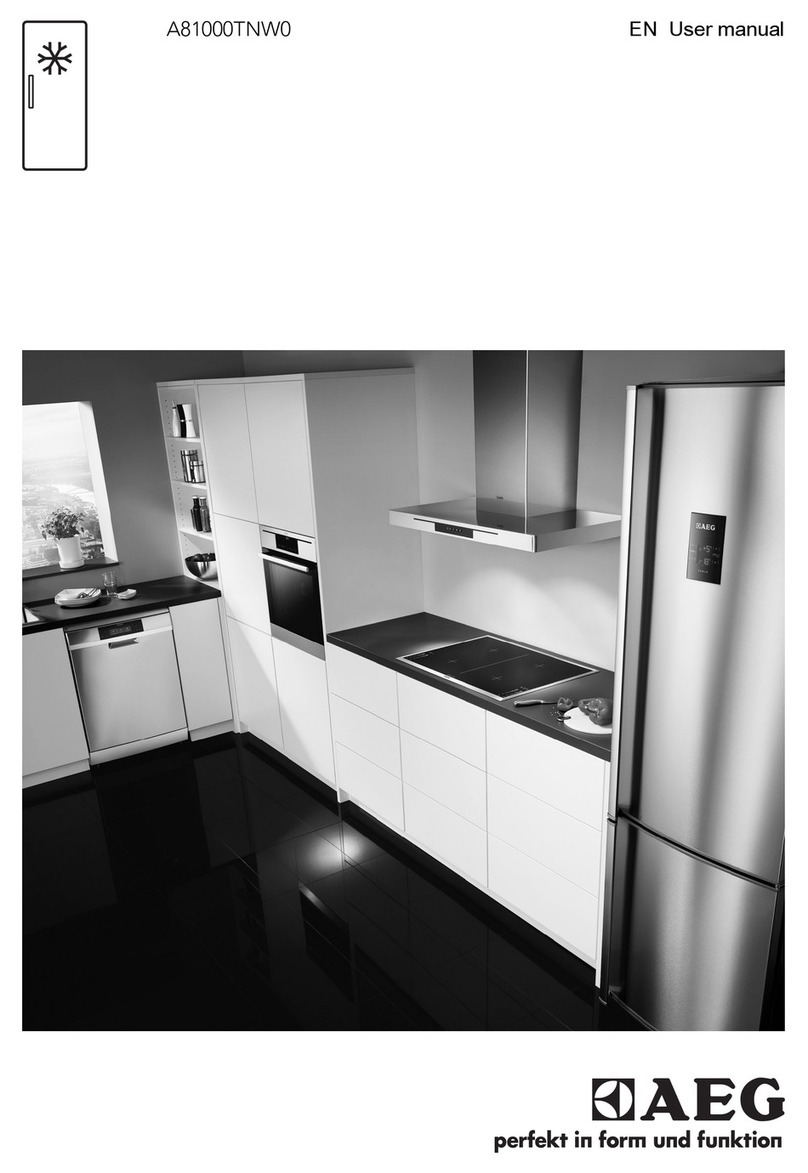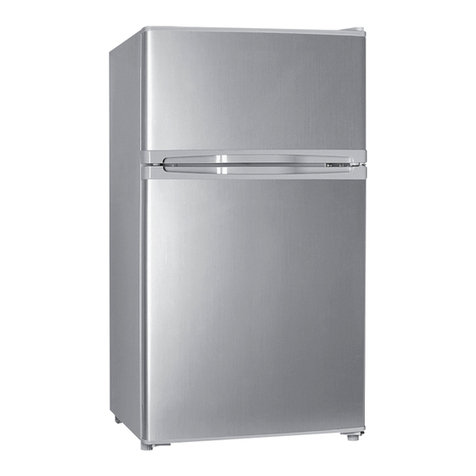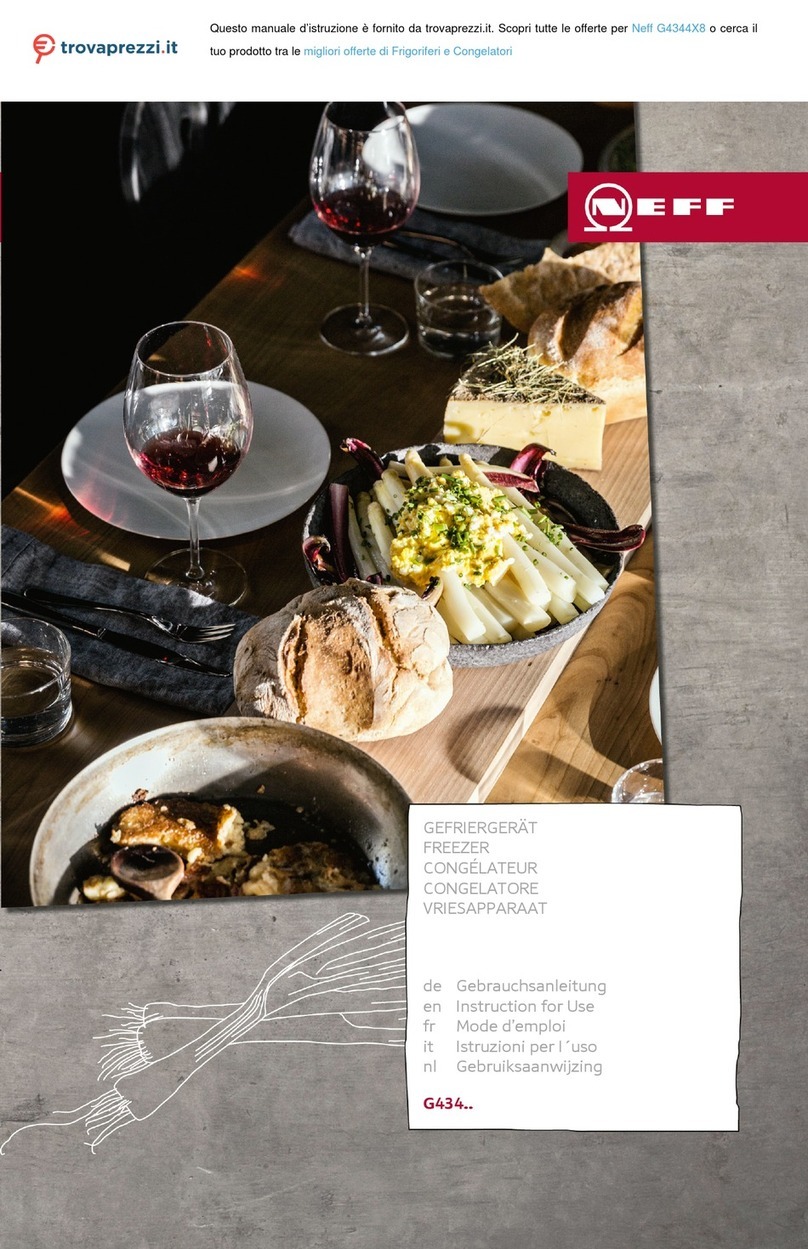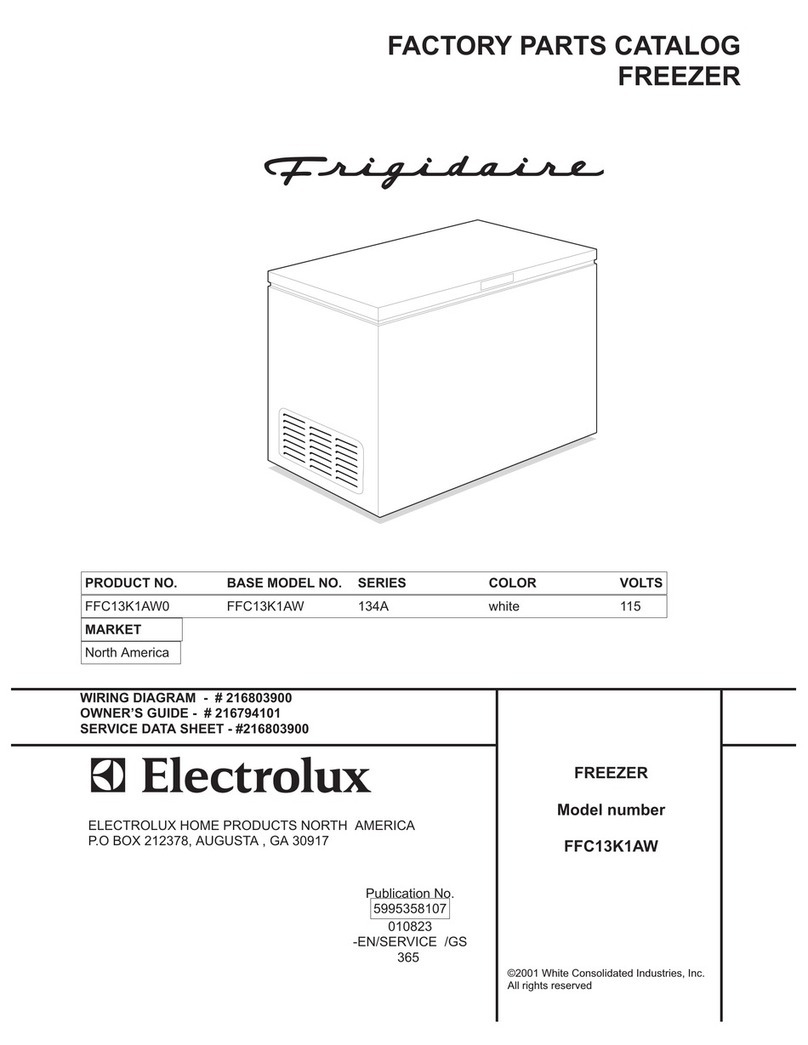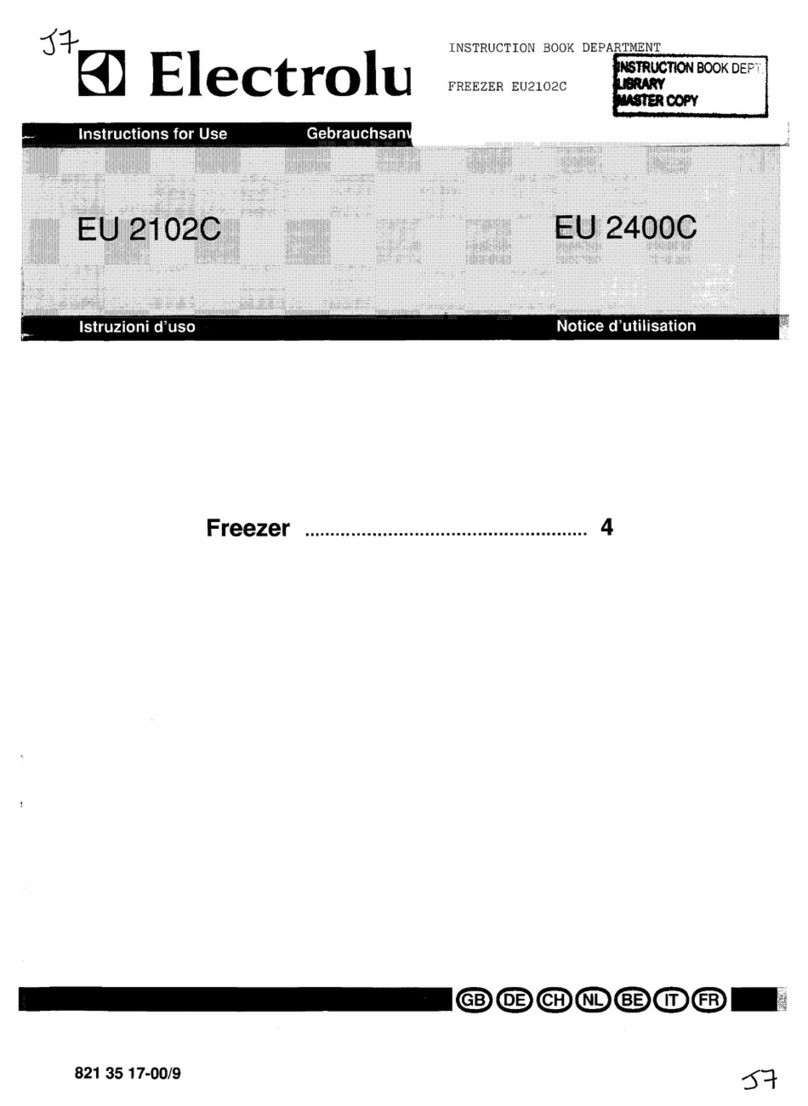Downloaded from www.vandenborre.be
POWER FAILURE
If there is a power failure for a short time less than 12hours keep the door
closed.Frozen food should not be affected if the failure lasts for less than 12
hours.
Extra protection can be given by covering the appliance with two or three thick
blankets.
If a long power failure is anticipated, try to get the foodstuff into another appliance or
cold store, if possible.
If the power cut is longer than 12hrs then check the content of the freezer.
If the food has defrosted, cook and refreeze the food or it should be eaten
immediately. Never refreeze food that as been defrosted.
CLEANING AND MAINTENANCE
Before any cleaning or maintenance is carried out you must disconnect the appliance
from the mains supply by removing the plug, never remove the plug by pulling on the
mains cord. Remove the plug by pulling on the plug itself.
It is recommended that when cleaning the appliance, both the inside and outside, can be
cleaned using warm water and a little bicarbonate of soda. Use 1 teaspoon to 1.2 liters
of water
Do not use detergents, abrasive powders, highly perfumed cleaning products, wax
polishes or cleaning products containing bleach or alcohol.
External Cleaning, wash the outer cabinet with warm soapy water.
Do NOT use abrasive products. There are sharp edges on the underside of the product
so care should be taken when cleaning.
Once or twice a year dust the compressor at the back of the appliance, with a brush or
Vacuum cleaner, as an accumulation of dust will affect the performance of the
appliance and Cause excessive electricity consumption.
Warning:
The refrigerating system must not be damaged at any time.
DEFROSTING THE FREEZER
The freezer will need defrosting periodically (when the frost is more than 3mm thick).
Turn the temperature control to “MIN” and unplug from the mains socket.
Hold the plug itself. Do not remove the plug by pulling on the mains cord.
Remove all the frozen food and wrap in thick blankets to retain the cold or move it to
another freezer.
Leave the freezer door open with a suitable container under the front to catch the
water as the frost melts.
When the freezer is fully defrosted, clean the inside (see the section on cleaning and
maintenance). Then close the door and connect to the mains, now set the temperature
control to your required setting (usually the “Normal” setting).
Leave the freezer running for approximately 4 hours before re-introducing the frozen
food.
9
8
